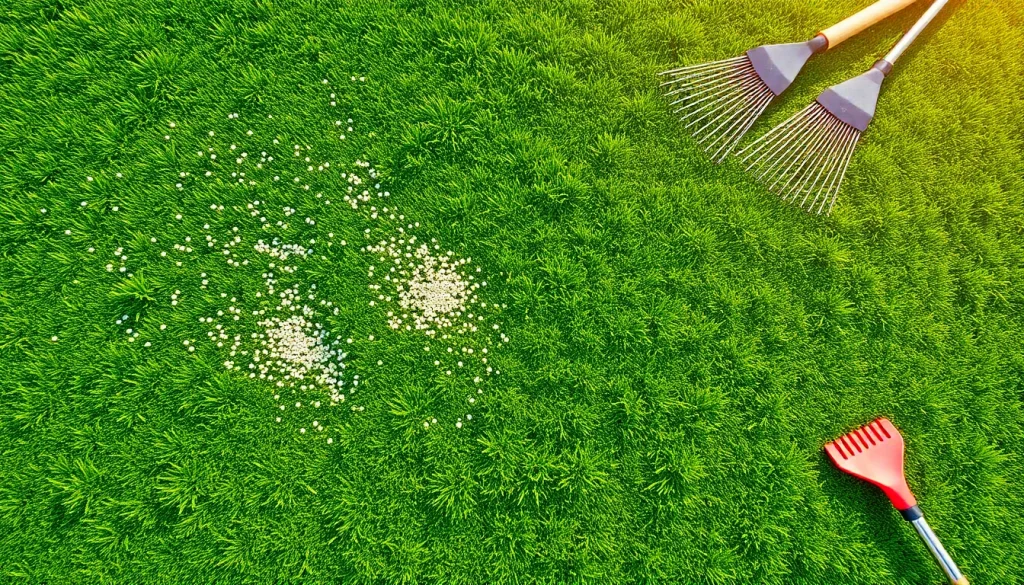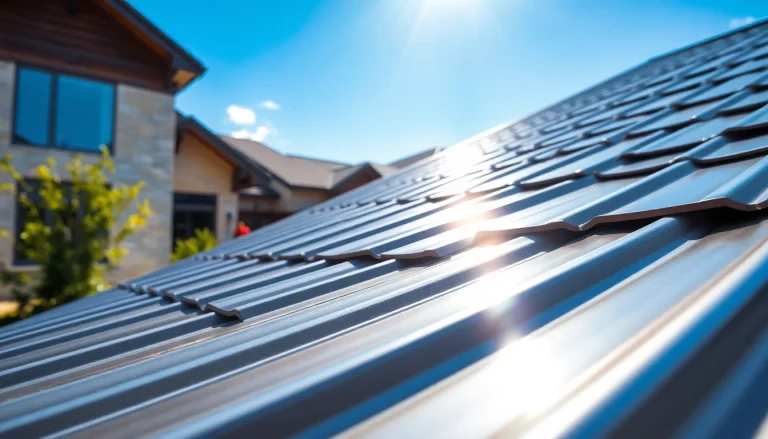
Understanding Over Seeding: What It Is and Why You Need It
Over seeding is a vital lawn care technique that involves planting grass seed directly into existing turf without the need for extensive soil disruption. It’s an effective way to rejuvenate a thinning lawn, improve its health, and enhance its aesthetic appeal. By practicing over seeding, homeowners can achieve a lush lawn while minimizing the risk of weeds, promoting better growth, and ensuring an attractive green space. This section will explore the definition of over seeding, its benefits, and the best grass types for this application.
Definition of Over Seeding
Over seeding is the process of spreading grass seed on top of the existing grass without turning the soil. It differs from traditional planting methods, making it less labor-intensive and more environmentally friendly since it preserves the existing root systems and soil structure. This method is particularly beneficial for homeowners who want to improve their lawns without undergoing the extensive effort of re-sodding or tearing everything up to start anew.
Benefits of Over Seeding Your Lawn
There are several compelling reasons to consider over seeding your lawn, including:
- Improved Grass Density: Over seeding introduces new seeds, which helps thicken the grass cover, resulting in a denser, healthier lawn.
- Enhanced Color and Texture: With the right seed mix, over seeding can introduce varieties that enhance the lawn’s overall color and texture, creating a more visually appealing environment.
- Weed Control: A thicker lawn can outcompete weeds for resources such as water, nutrients, and light, reducing the likelihood of weed growth.
- Stress Recovery: Over seeding can help revive an aging or stressed lawn, allowing it to recover more effectively from drought or heavy foot traffic.
- Improved Resistance: Introducing newer grass varieties can improve the lawn’s resistance to pests and diseases.
Best Grass Types for Over Seeding
Choosing the right grass type for over seeding is crucial for success. Here are some popular options for different climates:
- Perennial Ryegrass: Known for its quick germination and fine texture, this grass is ideal for cool-season areas and is often used to establish lawns quickly.
- Bermudagrass: A warm-season favorite, Bermudagrass thrives in sunny areas and is great for high-traffic lawns.
- Tall Fescue: This type has excellent drought resistance and works well in transitional zones, providing a robust lawn with a deep root system.
- Kentucky Bluegrass: Popular in northern climates, it provides a lush lawn but does take longer to establish. It can be mixed with ryegrass for quicker germination.
When to Over Seed: Timing is Key
Timing is critical for successful over seeding. Proper scheduling can mean the difference between a lush, thriving lawn and a spotty, weak one. This section delves into the optimal seasons, signs that your lawn needs over seeding, and weather considerations for successful seeding.
Optimal Seasons for Over Seeding
The best times to over seed depend largely on your location:
- Late Summer to Early Fall: This is generally the best window for over seeding for cool-season grasses. The prevailing temperatures support seed germination, and the warm soil is conducive to root establishment before winter.
- Spring: For warm-season grasses, late spring is an ideal time, as temperatures are just beginning to warm up, allowing seeds to germinate effectively.
Signs Your Lawn Needs Over Seeding
Recognizing when your lawn requires over seeding is essential for maintaining its health. Look out for these signs:
- Thin or patchy areas on your lawn that aren’t recovering from stress.
- A decline in grass color or density, indicating possible disease or pest damage.
- Soil erosion or bare patches where grass has died off due to excessive heat or drought.
Weather Considerations for Successful Seeding
Weather plays a pivotal role in the success of over seeding. Factors to consider include:
- Avoiding extreme heat as it can stress newly germinated seeds. Ideal soil temperatures for germination are typically between 50°F to 70°F.
- Monitoring rainfall to keep soil moist but not saturated. Consistent moisture is vital without causing pooling or runoff.
- Considering wind patterns which can affect seed spread. Calm days are best for overseeding.
How to Over Seed: Step-by-Step Process
Executing a successful over seeding requires careful preparation and technique. Below is a detailed step-by-step guide to ensure effective results.
Preparation Before Over Seeding
Proper preparation sets the foundation for successful over seeding.
- Mow the Grass: Lower your mower blades to cut the grass shorter than usual. This helps improve seed-to-soil contact.
- Rake and Debris Removal: Use a lawn rake to remove thatch and debris, helping expose the soil surface to the new seeds.
- Soil Aeration: If your lawn has compacted soil, consider aerating it before seeding. Aeration creates holes in the soil, allowing resources to reach the grassroots more effectively.
The Overseeding Technique: Methods and Tools
Once preparation is complete, it’s time to seed. Here’s a breakdown of techniques:
- Broadcast Method: Use a broadcast spreader to evenly distribute the seeds across your lawn. This method ensures even coverage and reduces waste.
- Drop Spreader: Another option that offers better precision, especially in small areas or alongside flower beds.
Regardless of the method you choose, aim to cover the lawn with 10-25 seeds per square inch, depending on the chosen grass type.
Post-Over Seeding Care Tips
After over seeding, providing adequate care is crucial for seedling establishment:
- Irrigation: Water lightly but frequently in the initial weeks to keep the soil consistently moist. Avoid over-saturating, which can wash away seeds.
- Avoid Heavy Foot Traffic: Keep off newly seeded areas to prevent damaging seedlings and allow them the best chance to establish.
- Fertilization: Consider applying a starter fertilizer with a balanced ratio of nutrients to provide seedlings with essential elements for growth.
Common Mistakes to Avoid During Over Seeding
While over seeding is generally straightforward, a few common pitfalls can hinder its success. Recognizing and avoiding these can lead you to a flourishing lawn.
Using the Wrong Seed Type
Choosing the wrong type of grass seed can lead to disappointing results. Make sure to select a seed that matches your local climate, sunlight exposure, and lawn conditions. Research the compatibility of grass types with your existing lawn to ensure a seamless blend.
Neglecting Soil Preparation
Failing to prepare your lawn adequately can reduce seed effectiveness. Properly raking and aerating the soil is essential. Skipping these steps can lead to poor seed-to-soil contact, resulting in limited germination.
Ignoring Moisture Needs After Seeding
Watering is multifaceted and essential for seed establishment. New seeds require consistent moisture without becoming drowned in water. Monitoring soil conditions closely in the weeks following seeding ensures you can adapt your care strategy as needed.
Evaluating Results: Knowing If Your Over Seeding Was Successful
Understanding how to evaluate the results of your over seeding is vital. Knowing signs of healthy growth and being ready to address potential challenges will help you maintain a lush lawn.
Signs of Healthy Growth After Over Seeding
After a successful overseeding effort, you should observe:
- Uniform germination across patches, indicating that seeds have taken well.
- New grass shoots being visibly greener and more vibrant than older grass.
- A significant thickening of the overall lawn density, making it resistant to weed invasion.
Challenges and Troubleshooting Tips
If you encounter challenges after over seeding, such as patches not sprouting or poor growth, consider these troubleshooting tips:
- Check soil moisture levels, making sure the soil is adequately moist without being over-saturated.
- Reassess whether the correct seed type was used and if there were any underlying diseases affecting growth.
- Examine potential pests or factors affecting the newly germinated seedlings.
Long-term Benefits of Proper Over Seeding
Successfully executed over seeding paves the way for long-term lawn health. A resilient and thicker lawn not only fosters enhanced aesthetic appeal but also increases value in residential landscapes. Additionally, over time, the establishment of more robust grass varieties can mitigate the need for intense lawn management practices, leading to reduced costs and effort long-term.






